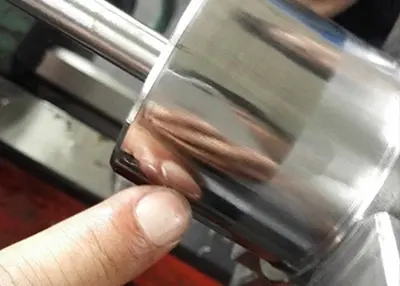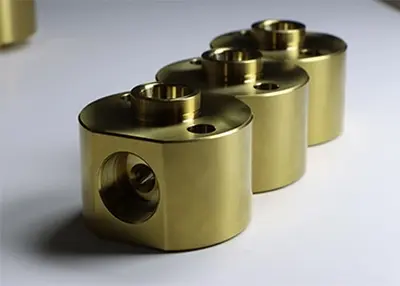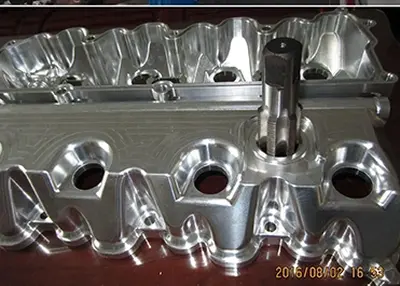When it comes to home repairs, renovations, or DIY projects involving metals, it is important to have good welding skills. These skills can be developed through practice and understanding of various welding techniques.
There are multiple types of welding methods utilized globally, with arc welding being the most prevalent. Choosing between MIG and TIG welding can determine the success or failure of a project. This article will provide an overview of arc welding basics and compare the difference between mig and tig welding techniques.
MIG and TIG welding are two popular welding methods, each with its difference between tig and mig welder difference between mig and tig welder unique characteristics. The key differences lie in the power source, input voltage, and the types of materials they are best suited for. Understanding the difference between tig and mig welders can help determine the most suitable welding technique for your specific needs.
Product | TIG Welders | Mig Welder |
Power Source | AC/DC | AC |
Input Voltage | 110/220V | 120 V - 240 V |
Weight | Lighter | Heavier |
The type of power source used plays a significant role when comparing welding mig tig techniques. TIG welding offers the flexibility of utilizing either an AC or DC power source, depending on the specific metal being welded and the desired characteristics of the electric arc. The choice between AC and DC power depends on factors such as the material being worked with and the desired welding outcome.
In TIG welding, when working with aluminum materials, an AC power source is typically preferred. AC power helps to effectively weld aluminum by facilitating good heat distribution while avoiding issues such as arc blow. On the other hand, when a strong and stable electric arc is required, such as for welding thicker or denser metals, a DC power source is more suitable in TIG welding.
In contrast, MIG welding relies solely on a DC power source. The DC power is directed through the consumable wire as it is continuously fed to the workpiece. This provides a steady and reliable electrical current that melts the wire and forms the weld.
MIG welders typically operate on a standard household input voltage of 110 to 240 volts. This makes them more accessible for home users or small workshops without access to higher voltages. The flexibility of input voltage allows for ease of use in a variety of settings, making MIG welding suitable for a wide range of applications.
TIG welders often require a higher input voltage, typically ranging from 220 to 480 volts. This higher input voltage is necessary to generate the intense heat required for precise TIG welding. The increased voltage requirement means that TIG welding machines may not be as readily available or suitable for use in standard household electrical systems. They are commonly found in professional welding shops or industrial settings where higher voltage power sources are available.
MIG welders tend to be heavier compared to TIG welders. This is because MIG welding machines typically incorporate additional components such as wire feed systems and gas cylinders, which contribute to the overall weight. The heavier weight of MIG welders can make them less portable and more suitable for stationary or workshop use.
TIG welders are generally lighter in weight. They are designed to be more compact and portable, making them easier to transport to different job sites or locations. This makes TIG welders a preferred choice for professionals who may need to move their equipment frequently or work in various environments.
TIG welding and MIG welding are two popular techniques used in the welding industry. So, what is the difference between mig and tig welding? Both methods involve creating an electric arc to join metals. The choice between TIG welding and MIG welding depends on the following factors.

Electrodes play a crucial role in arc welding by creating electric arcs and, in some cases, serving as filler materials. They can be either positive/anode or negative/cathode. There are two main types: consumable and non-consumable.
Consumable electrodes, such as those made from mild steel or nickel steel, create electric arcs and act as filler materials. Mid welders have a low melting point (MP) and are commonly used in welding.
On the other hand, non-consumable electrodes only create electric arcs and do not melt during the welding process. Examples include copper-coated carbon, graphite, and tungsten, which is the material typically used in TIG welding.

Shielding gases play a crucial role in protecting the welding pool and workpiece from atmospheric contaminants during the welding process.
In MIG welding, CO2 is the most commonly used shielding gas. It is widely available and suitable for a range of applications. Other gases such as helium, argon, and oxygen can also be used depending on the specific requirements. These gases are particularly suitable for certain metals, such as aluminum.
In TIG welding, argon is typically used as the shielding gas. However, in certain scenarios, such as when welding materials with high nickel content, a mixture of helium and argon may be used. Additionally, when welding stainless steel, common shielding gas mixtures include argon/nitrogen or argon/hydrogen. These gas mixtures help to achieve the desired welding results and improve the quality of the weld.

The welding torch is an essential component of the welding machine, housing the electrode and gas nozzles that play crucial roles in different stages of the welding process. Effective cooling of the welding torch, either through gas or water, is essential for its optimal performance during welding. Consequently, understanding the characteristics of the tig vs mig welder welding torch is a key consideration when comparing the mig tig welding processes.
Both TIG and MIG welding can use either air-cooled or water-cooled welding torches. Air-cooled torches rely on gases for cooling the nozzle. They are generally less efficient, lighter, and more affordable. On the other hand, water-cooled torches are better suited for heavy-duty tasks as water provides superior cooling properties. While both welding processes can employ either type of torch, TIG welding more commonly utilizes water-cooled torches due to the higher heat levels generated during the process.

When it comes to the speed of the welding process, MIG welding takes the lead. MIG welding is designed to run continuously for longer periods, allowing for faster welding speeds. This makes it well-suited for high production rates and projects that require quick completion.
In contrast, TIG welding is known for its meticulous focus on details and precision. This attention to detail leads to slower welding speeds compared to MIG welding. While the slower pace of TIG welding is advantageous for projects that require utmost precision and high-quality welds, it can be unsuitable for applications that prioritize speed and efficiency.

Both TIG and MIG welding techniques carry potential safety risks, such as exposure to heavy fumes, electric shock, and the risk of fire and explosions, as mentioned in a 2015 study. However, TIG welding is generally considered the safer option compared to MIG welding due to its cleaner process.
TIG welding involves the use of a non-consumable tungsten electrode and a separate filler material, resulting in minimal fume generation. This reduces the risk of inhaling hazardous airborne particles, making TIG welding a safer choice in terms of respiratory health.
It is important to prioritize safety precautions regardless of the welding technique used. Working in a well-ventilated area is crucial to prevent the accumulation of fumes. Having a fire extinguisher readily available and wearing flame-resistant materials can further mitigate potential risks, as advised by the Canadian Center for Occupational Health and Safety (CCOHS).
1. Stainless Steel and Mild Steel
For stainless steel and mild steel, both mig and tig welding can be utilized effectively. MIG welding is commonly preferred for stainless steel due to its ability to provide faster and more efficient welding, especially for thicker materials. TIG welding is better suited for thin stainless-steel sheets, offering precise control and producing high-quality welds.
2. Cast Iron
In the case of cast iron, TIG welding is generally the preferred option. Cast iron is a brittle material that is prone to cracking, and TIG welding's precise heat control helps minimize the risk of cracking. While MIG welding can be used for cast iron, it requires special consumables and careful preheating to prevent cracking.
3. Aluminum
TIG welding is typically the recommended aluminum as a choice. Aluminum has high thermal conductivity and a low melting point, making it challenging to weld with MIG welding. TIG welding's ability to control heat input and use pure argon as a shielding gas makes it more suitable for aluminum welding, resulting in stronger and cleaner welds.
The suitability of each welding method depends on the circumstances, as there are pros associated with each technique.
1. Rapid Welding Process
MIG welding is known for its quick welding speed, allowing for faster completion of projects compared to other methods.
2. Cost-Effective
MIG welding tends to be more cost-effective than other techniques, making it a preferred choice for projects where budget is a concern.
3. Accuracy
MIG welding can deliver precise and accurate welds, ensuring high-quality results for a wide range of applications.
4. Automation Capability
MIG welding can be automated, allowing for consistent and reliable welds without the need for constant manual control. This makes it suitable for large-scale and repetitive welding tasks.
5. Wide Availability of Equipment
MIG welding equipment is readily accessible and widely available, making it more convenient for welders to acquire the necessary tools and materials.
6. Clean Welds
MIG welding produces clean welds with minimal splatter or slag, resulting in a neat and aesthetically pleasing appearance.
1. Precision and Accuracy
TIG welding is known for its precise and accurate welds, making it suitable for applications that require meticulous attention to detail.
2. Aesthetic Appeal
TIG welding produces welds of high aesthetic quality, making it ideal for projects where the appearance of the weld is important, such as in artwork or ornamental designs.
3. Environmental Friendliness
Compared to other welding methods, TIG welding is considered more environmentally friendly. It produces fewer emissions, such as smoke and fumes, reducing its impact on air quality.
4. Operational Control
TIG welding provides better control over the welding process, allowing for precise manipulation of the heat input and weld pool. This control enables welders to achieve desired results with various materials and thicknesses.
5. Non-Consumable Electrodes
TIG welding utilizes non-consumable tungsten electrodes, which results in lower maintenance and operational costs. The electrodes have a longer lifespan compared to consumable electrodes used in other welding processes.
Both TIG and MIG welding techniques have their drawbacks when it comes to joining various metals. Having an understanding of these advantages and disadvantages can assist in making an informed decision about the more suitable method for a particular situation.
1. Weaker Welded Joints
Compared to TIG welding, MIG welding may result in weaker welded joints, potentially affecting the overall strength and durability of the weld.
2. Electric Arc Stability
MIG welding can be less reliable than TIG welding due to issues with maintaining a stable electric arc during the welding process. This can lead to inconsistencies in the quality of the welds.
3. Environmental Impact
MIG welding is considered less environmentally friendly as it generates smoke and fumes during the process, contributing to air pollution. These emissions may contain harmful substances and require proper ventilation.
4. Potential for Rust Formation
Welding with MIG can create an increased risk of rust formation in the welded area. Proper post-welding surface treatment and protective coatings are necessary to prevent or mitigate this issue.
5. Limited Control with Thinner Materials
MIG welding may pose challenges when welding thinner materials due to its lesser operational control. The heat input can be difficult to manage, increasing the likelihood of burning through the thin material.
6. Requirement for Indoor Shielding
The use of shielding gases in MIG welding necessitates the process to be conducted indoors. This can limit the flexibility of the welding operation and require suitable ventilation systems for safe working conditions.
7. Material Compatibility
MIG welding requires specific consumables and techniques for each metal to be welded, which can be more complex compared to TIG welding.
1. Higher Cost
TIG welding tends to be costlier compared to other welding methods due to its slower process and the use of filler materials. This can increase overall project expenses.
2. Clean Surface Requirement
TIG welding necessitates a clean surface for optimal results. Any contamination or impurities on the welding surface can negatively impact the quality of the weld.
3. Need for Experienced Operators
TIG welding requires a skilled and experienced operator to ensure precise control over the welding process. The intricate nature of TIG welding demands expertise and proficiency to achieve high-quality welds.
4. Longer Welding Time
TIG welding generally takes longer to complete compared to other welding techniques. The slower welding speed can lead to increased production time, which may not be suitable for projects with strict time constraints.
When deciding between TIG and MIG welding techniques, it's important to consider the specific applications where each method excels.
TIG welding is ideal for projects that prioritize precision, cleanliness, aesthetics, longevity, and overall quality. It is particularly well-suited for welding thinner materials, as it minimizes the risk of burn-through. TIG welding is also considered a more environmentally friendly option, as it generates fewer fumes and is better for the welder's health.
MIG welding is preferred in situations where speed is crucial, such as production and construction work. It is a cost-effective choice, as it helps minimize overall labor and consumable expenses. Additionally, MIG welding is highly recommended for beginners or those training beginners, as it offers an easier learning curve and faster skill development.
Ultimately, the decision between TIG and MIG welding should be based on the specific requirements of the project, taking into account factors like precision, speed, cost, and the skill level of the welder. By considering the advantages and disadvantages of each method,
one can make an informed choice and select the most suitable welding technique for a successful outcome.
TIG welding has various applications that distinguish it from MIG welding. It is well-suited for both manual and mechanized welding, making it commonly used in pipeline and pipe welding. Additionally, TIG welding is suitable for welding sheet metal parts found in the aviation and aerospace industries. Here are some specific applications of TIG welding:
1. Welding Thinner Metals
TIG welding is particularly suitable for welding thinner metals due to its precision, accuracy, and superior operational control. It eliminates the need for extensive cleaning in comparison to other welding methods.
2. Welding Aluminum and Other Metals
TIG welding can effectively weld a wide range of metals, including aluminum, copper, and even special metals like titanium. However, it is not recommended for welding cast iron.
3. Welding Shorter Production Runs
TIG welding is commonly used in situations where shorter production runs are required. It may become more complex and costly when applied to longer production runs.
4. Aesthetics
TIG welding is valued for its ability to produce high aesthetic appeal in welded workpieces. It finds applications in creating artwork, ornamental designs, and automotive projects where visual appeal is important.
To understand comparison, there is a need to understand how the process works. Below is a brief introduction to how the three welding processes work.
l MIG Welding:
MIG welding, or Gas Metal Arc Welding (GMAW), utilizes a continuous wire electrode that is fed through a welding gun. It is a versatile process suitable for welding steel, stainless steel, and aluminum. MIG welding is known for its high productivity and fast welding speeds, making it ideal for large-scale projects. It provides excellent penetration and strong weld joints. Additionally, MIG welding is relatively easy to learn and offers good control over the welding process.
l TIG Welding:
TIG welding, or Gas Tungsten Arc Welding (GTAW), uses a non-consumable tungsten electrode to create the arc. Filler metal is manually added, making it suitable for precise and intricate welding applications. TIG welding produces high-quality, clean, and aesthetically pleasing welds, which is why it is popular in industries where appearance matters, such as automotive and artistic applications. It can work with a wide range of materials, including stainless steel, aluminum, copper, and titanium. Although TIG welding requires more skill and experience to master, it offers excellent control over heat input and weld quality.
l Stick Welding:
Stick welding, or Shielded Metal Arc Welding (SMAW), employs a consumable electrode coated in flux to create the arc. It is a versatile process suitable for welding various materials, including steel, stainless steel, cast iron, and some non-ferrous metals. Stick welding is known for its portability and ability to work in outdoor and rugged conditions.
Richconn is a comprehensive job shop and repair company that focuses on the production of large assemblies and subassemblies, catering to both prototype and full production quantities. With our extensive expertise in machining and grinding, we provide a wide range of secondary services, including fabrication, welding, and comprehensive repair, replacement, and reassembly capabilities.
Our team of welders is fully certified and experienced in MIG and TIG welding techniques, enabling us to work with various materials such as aluminum, carbon steel, and stainless steel. Within our welding department, we handle the assembly and repair of numerous products.

At Richconn, we adhere strictly to ISO 9001:2008 standards and other relevant quality control measures, ensuring the highest level of precision and quality in our welded products. Our commitment to excellence extends throughout our operations, guaranteeing customer satisfaction and exceptional results.

In conclusion, understanding the differences between MIG and TIG welding is crucial for sheet metal fabricators when choosing the right welding process. Selecting the appropriate welding method will contribute to the overall quality and efficiency of sheet metal fabrication projects.

 What Is A Coordinate Measuring Machine Used For?July 16, 2024A coordinate measuring machine is often used to qualify rapid prototypes and production parts that have complex geometries with tight tolerances. Learn more about it to ensure every part you make meets and exceeds your expectations.view
What Is A Coordinate Measuring Machine Used For?July 16, 2024A coordinate measuring machine is often used to qualify rapid prototypes and production parts that have complex geometries with tight tolerances. Learn more about it to ensure every part you make meets and exceeds your expectations.view What are the commonly used surface finishing?September 27, 2023Surface finishing is to clean, sweep, deburr, de-grease, de-oxidize, etc., the surface of the workpiece, which is used to meet the corrosion resistance, abrasion resistance, decorative or other special functional requirements of the product.view
What are the commonly used surface finishing?September 27, 2023Surface finishing is to clean, sweep, deburr, de-grease, de-oxidize, etc., the surface of the workpiece, which is used to meet the corrosion resistance, abrasion resistance, decorative or other special functional requirements of the product.view Brass vs Bronze vs Pure Copper vs Copper Alloys: An in-depth look at their differencesSeptember 26, 2023The comparison of brass to bronze to copper and its copper alloys is crucial as these metals can be easily confused. In addition, the distinction between these materials is also very subtle. As a result, development engineers or designers can be seriously confused when it comes to material selection. In particular, the similarity of these metal constituent elements makes it more difficult to classify and select them.view
Brass vs Bronze vs Pure Copper vs Copper Alloys: An in-depth look at their differencesSeptember 26, 2023The comparison of brass to bronze to copper and its copper alloys is crucial as these metals can be easily confused. In addition, the distinction between these materials is also very subtle. As a result, development engineers or designers can be seriously confused when it comes to material selection. In particular, the similarity of these metal constituent elements makes it more difficult to classify and select them.view What Is the Difference Between Calcined Alumina and Aluminum Oxide?October 27, 2023In the refractory industry, calcined alumina and activated alumina are buzzwords, because they have become important synthetic raw materials for refractories, especially in some high-performance amorphous refractories. However, the difference between the two and whether the term is appropriate, there is ambiguity.view
What Is the Difference Between Calcined Alumina and Aluminum Oxide?October 27, 2023In the refractory industry, calcined alumina and activated alumina are buzzwords, because they have become important synthetic raw materials for refractories, especially in some high-performance amorphous refractories. However, the difference between the two and whether the term is appropriate, there is ambiguity.view Application of 5-Axis Machining Center in High-Speed Blower Impeller ManufacturingMarch 24, 2023With the rapid development of technology, high-speed blowers have been widely used in various fields. In order to improve the performance and efficiency of the blowers, it is necessary to manufacture ...view
Application of 5-Axis Machining Center in High-Speed Blower Impeller ManufacturingMarch 24, 2023With the rapid development of technology, high-speed blowers have been widely used in various fields. In order to improve the performance and efficiency of the blowers, it is necessary to manufacture ...view What Are the Benefits of Cnc Precision Machining?October 25, 2023The sunk costs of CNC precise machining may be a bit higher than traditional machining methods. However, in the long run, the benefits offered by the process definitely make it worth the extra investment, and today Richconn will share with you what all the benefits of CNC machining are.view
What Are the Benefits of Cnc Precision Machining?October 25, 2023The sunk costs of CNC precise machining may be a bit higher than traditional machining methods. However, in the long run, the benefits offered by the process definitely make it worth the extra investment, and today Richconn will share with you what all the benefits of CNC machining are.view